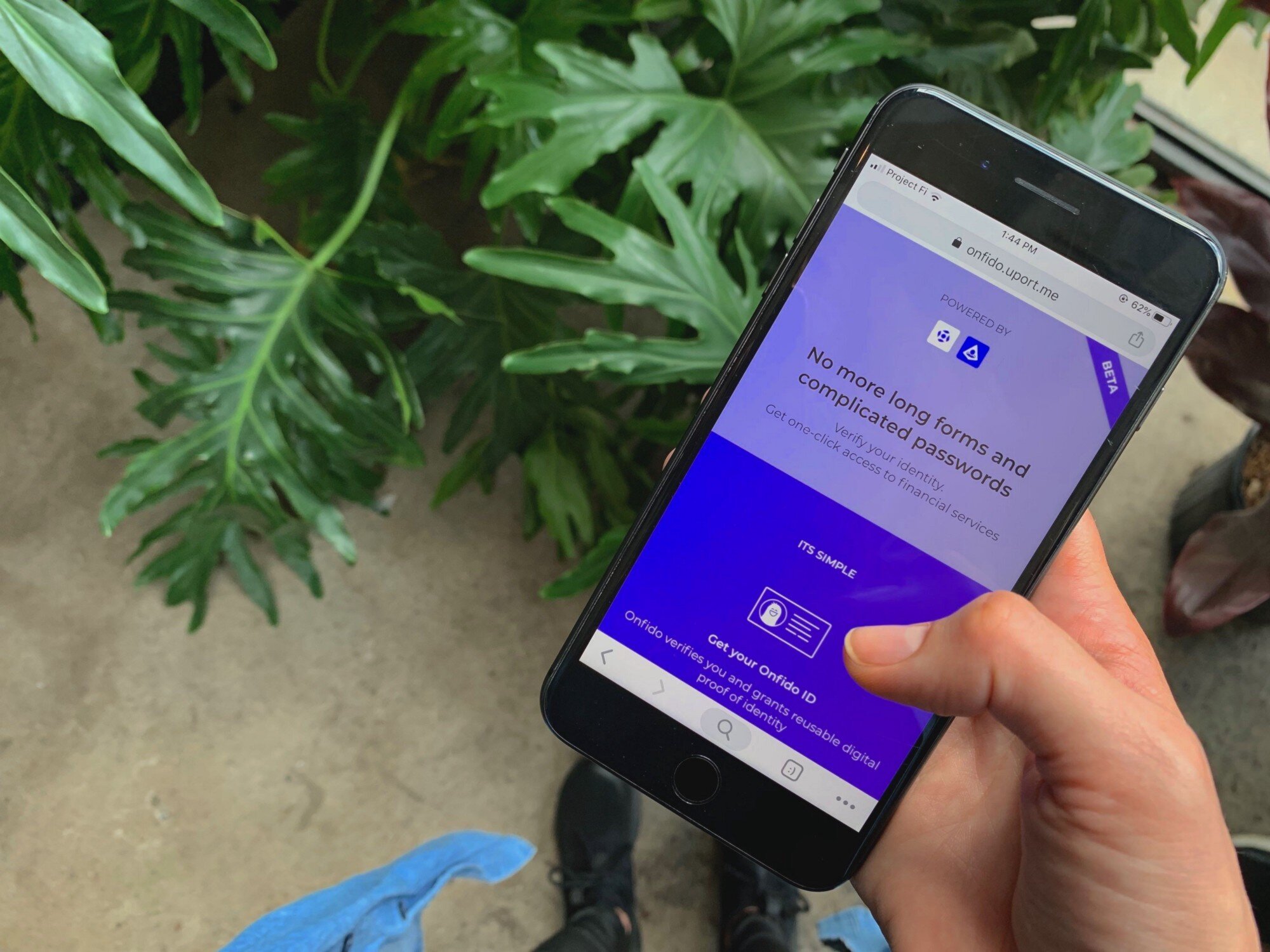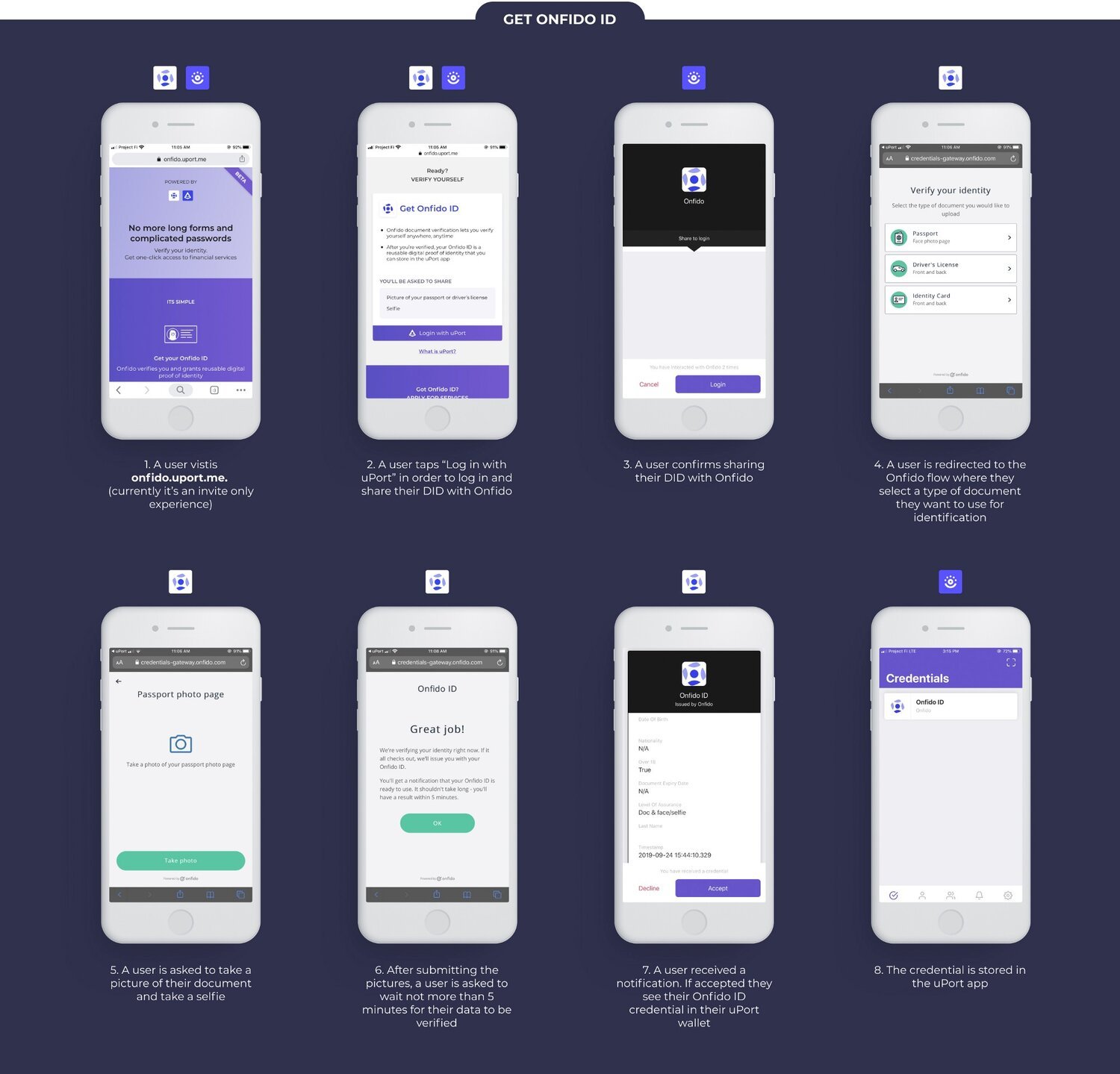
Testing a Blockchain Digital Identity Solution
CLIENT: CONSENSYS uPORT TEAM
ROLE: USER TESTING, USER INTERVIEWS
TEAM: ANIA LIPINSKA (PRODUCT DESIGN, PROTOTYPING)
TIME: 3 WEEKS
The Challenge
uPort is a product from Consensys that utilizes blockchain technology to allow users to securely and privately manage their digital identities. The uPort team approached me for assistance in running a user research project in preparation for a UK pilot launch in partnership with Onfido, a global identity verification provider.
The idea of a blockchain-enabled "decentralized identity" that provides users with a "reusable credential" is a well-known and longstanding use case in the blockchain field. This innovation empowers users with complete control over their personal data while allowing them to transfer their digital identity to any participating application or service. uPort wanted to understand how ordinary UK citizens, who might participate in their pilot, would respond to this value proposition. Would the concept of reusable credentials be clear enough for the average person? And were there any other usability issues that would impede the success of the pilot?
User Testing
Since the pilot was conducted in the UK, our research also focused on UK participants. We used the remote recruiting platform Respondent.io to screen and recruit ten individuals from the UK. Each session lasted one hour and was held over Zoom video chat. The first thirty minutes consisted of semi-structured qualitative interviews, during which we asked questions aimed at understanding the participants' general technology usage, online financial service habits, and their attitudes and behaviors regarding privacy and security. In the second part of the session, I observed the participants as they interacted with a high-fidelity Figma prototype for thirty minutes. They employed a "thinking out loud" protocol to assess the usability of key tasks within the prototype flow. After each session, I debriefed with the product designer to discuss key takeaways. After five interviews and user tests, we made adjustments to the prototype to enhance user comprehension and interaction flow. We then retested the revised prototype with the remaining five participants.
Key Findings
Participants were hesitant to share their personal financial information with an unknown company
Most felt secure sharing their personal data with government agencies, post offices, and reputable financial institutions like banks. However, they were anxious about sharing sensitive information with an unfamiliar "beta" solution like uPort.
Participants did not grasp the value of having control over their personal data.
Our interviewees struggled to understand how uPort’s method—where users control and store their data on their phones—differed from the single sign-on solutions provided by companies like Apple, Google, and Facebook.
Attitudes towards privacy among participants were nuanced and often intertwined with trust.
Most individuals were willing to share their data as long as they understood the reasons behind the request. However, the concept of "privacy" was highly subjective, with opinions varying from complete indifference to significant concern.
Participants found the technical language of blockchain confusing and difficult to understand.
References to terms like "decentralized identifier (DID)" in the app were not accessible to a mainstream audience.
Impact
User testing on the prototype enabled the quick and cost-effective identification of usability issues within the interaction design. My research led to iterative design changes that significantly improved the user experience of the pilot. It also provided valuable insights to the team regarding the trade-offs that mainstream users are willing to accept between a service's usefulness, privacy, and security. In response, the team redesigned the pilot using blockchain-agnostic language and clarified the value of uPort's offerings. To educate users about the new privacy paradigm and enhance their trust, the redesign included clear information about how their data is handled at each step of the pilot.
“Sharon gave the uPort team invaluable help in facilitating usability studies for our latest pilot with Onfido. This was our first project that targeted users outside the blockchain world. The stakes were high, and we were understandably nervous about how our product would be received. Sharon’s experience, sector expertise, and fresh perspective as an informed outsider helped us run a successful round of interviews and gather invaluable feedback from our potential users. Thanks to Sharon, we are launching a pilot with high-quality UX.”
— Ania Lipinska, uPort Product Designer



